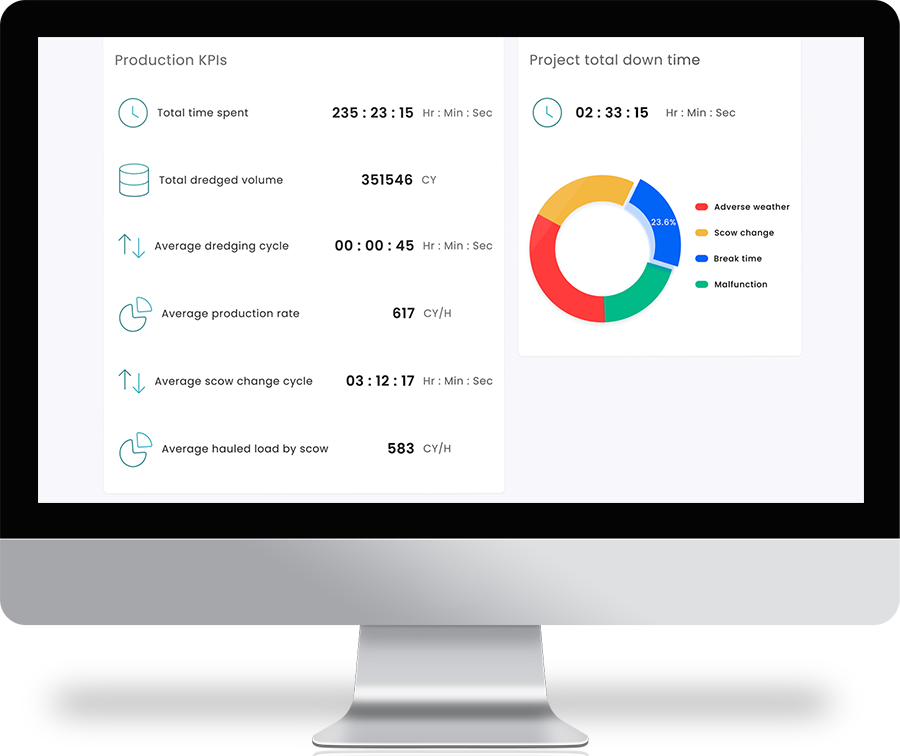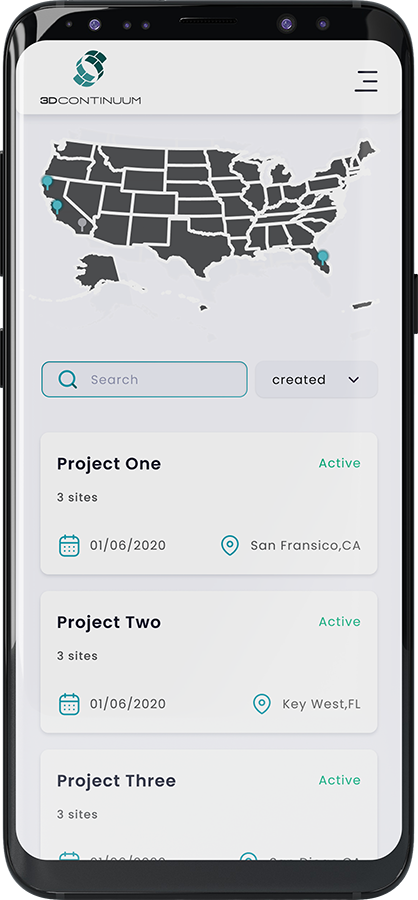300 Million Cubic Yards
is the annual dredging volume in the United States. It is enough to fill approximately 100,000 Olympic sized swimming pools.
Dredging Industry: The Catalyst for Trade and Commerce
Dredging Industry is a heavy-asset industry responsible for maintaining and expanding 25,000 miles of navigable waterways and nearly 400 ports to support $1.7 Trillion of annual trade in the United States.

Dredge Analytics™ is The FIRST AI-Powered Industrial DataOps Platform for operating and managing the maritime transportation infrastructure. Dredge Analytics™ combines Digital Twin technology and Artificial Intelligence to provide real time strategic insights for stakeholder in this field.


Scalable Cloud-based Platform
Available Anywhere on Any Device
Cloud based web application, available
anywhere on any device

Which features are included?
| DredgeAnalytics Feature | SILVER Basic Data Acquisition and Data Analytics | GOLD Advanced Analytics | PLATINUM Intelligent services |
|---|---|---|---|
| Monitor operational efficiency | ⬤ | ⬤ | ⬤ |
| daily, weekly, monthly and annual KPIs | ⬤ | ⬤ | ⬤ |
| individual vessels or complete fleet performance | ⬤ | ⬤ | ⬤ |
| Steering decision dashboards | ⬤ | ⬤ | ⬤ |
| Automatic daily operations reports | ⬤ | ⬤ | ⬤ |
| Tracking the operational carbon footprint | ⬤ | ⬤ | |
| Automated statutory reporting as per regulatroy requirements (e.g. forms 4267, 27A etc.) | ⬤ | ⬤ | |
| Human assisted QA/QC | ⬤ | ⬤ | |
| Weekly and monthly managerial reports available | ⬤ | ⬤ | |
| Technical and operational support | ⬤ | ⬤ | |
| AI-powered algoithms to optimize operationl efficiency | ⬤ | ||
| Autonomous QA/QC | ⬤ | ||
| Data driven strategic insights | ⬤ | ||
| Complete digital twin of the physical assets and operational processes | ⬤ | ||
| Use machine learning algorithms to optimise operational efficiency | ⬤ |

